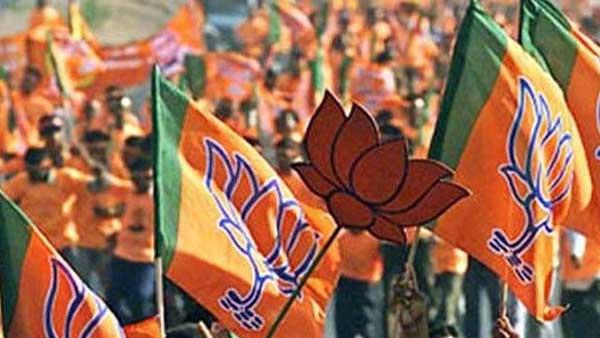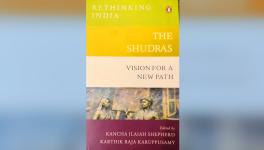Why BJP Gets Away With Dislodging Governments

Representational Image. Image Courtesy: Oneindia
The BJP seems to be on a spree to dislodge governments that won popular mandates in states. They succeeded in Madhya Pradesh and are doing everything possible to repeat it in Rajasthan. Why does the BJP think there will be no repercussions for these acts of brazen constitutional violation? Are they right in thinking so?
The colonial history of India tells us that the rule of law was necessary for the colonial rulers to maintain legitimacy as they were not a popularly-elected government. It was only in the postcolonial period that India managed to meld rule of law with popular sovereignty, but the gap between them in the popular imagination remained intact. What we are witnessing today is an outcome of that long historical legacy.
The BJP feels that constitutional provisions, separation of power and other institutional arrangements are not part of the popular imagination. Therefore, it believes that bending them to their benefit will come with very little cost. Similarly, institutions have rarely delivered the benefits they are supposed to, so they hardly matter to common people. If anything, there is wanton distrust of institutional functioning as agencies of urban elite’s concerns. For all we know, the BJP’s wanton breach of institutional rules might be read by ordinary people as punishment for the elites.
Further, the BJP also feels that majoritarianism gives them a legitimate right to undermine everything that comes in their way, which people would not mind so long as cultural majoritarianism is delivered. Thus its plans to go ahead with the construction of a temple in Ayodhya are progressing hand-in-hand with dismantling elected governments. Majoritarianism has to be demonstrative in bringing to its knees everything that opposed it, not just the Muslims but “Left-Liberals”, Opposition parties, social activists, the media and constitutionalism. All of these are seen by the BJP as a package and integrally linked in stopping them from constructing a majoritarian polity.
Finally, they also think that the criticism that is emanating from some quarters against dismantling state governments is not going to stick to the Teflon-coated image of Prime Minister Narendra Modi. He is above moral scrutiny. If anything, widespread chaos will only make people more dependent on a personality like his to “save” them from dysfunctional institutions and the chaos that inevitably follows such narratives. Modi is not viewed as a source of this chaos but a hope to correct the immoral bickering between “small-time” leaders. He will thrust his moral stature into the picture at an opportune time, saving India and democracy.
This is the script set up by the BJP, and therefore they do not expect any major backlash to their brazen institutional and constitutional violations.
Why are the Opposition parties unable to generate a mass critique? This partly reveals the weakening of the federal structure under Modi but it also reveals why regional leaders are feeling more vulnerable today than in the past. They may have won a popular electoral mandate due to various reasons including lack of alternative, anti-incumbency, last-minute welfare doles. But all of these do not seem to demonstrate a firm popular will of the people. Why would regional leaders not opt for street mobilisation; which involves going back to the people to demand a popular mandate? It is obvious that they are not sure if people would sympathise with them even if they are forcefully removed from seat of power.
In the past, among other things, coming to power involved regional sentiment. In the popular imagination it was a near-perpetual Centre versus state battle, and local pride could be mobilised against a Centre that was too overwhelming. Today this kind of a local imagination seems to have given way to a muscular cultural-nationalist imagination. Sustained mobilisation of a pan-Indian Hindu identity seems to have blunted regional and local identities of culture and language. It is clear that even somebody like West Bengal Chief Minister Mamta Banerjee does not feel confident of mobilising “Bengalis” against a Centre that has blocked funds that it is due, and did next to nothing for the recent floods that Bengal suffered.
We need to recognise that regional and local identities no longer hold the same potency when confronted with a populist-nationalist Hindu identity. In addition, regional leaders have used the same kind of muscular tactics to mobilise support at local levels. Therefore, people do not feel this is something exclusive to the Centre or the BJP. This is now considered pretty much universal to all parties without exception. In a sense at the heart of our polity there is a deep-seated cynicism towards politics, political parties and leaders. This has made leaders cutting across parties vulnerable, more so with wider media coverage and more flow of information, including fake news.
Many of us understand why the Congress party loses elections but we certainly don’t discern as clearly why it won the elections in Rajasthan and Madhya Pradesh, except for anti-incumbency and minor changes in the caste calculus. In a sense, the current high-handed techniques of the BJP are exposing an underlying muck (that includes within the ruling party and its image) and this is being mobilised to centralise all power and project Modi as the lone personality who can stay afloat and battle it all.
The current impasse can therefore only change if this new edifice that the BJP has built—with a reasonable understanding of the ground reality—is dismembered. The only way this structure can collapse is if the halo built around Modi takes a beating. But that is where the catch is. The Opposition and its leaders do not enjoy enough credibility to take on this challenge head on. Congress leader Rahul Gandhi is the only leader who has been offering a consistent critique of Modi but maybe it has not yet taken the shape of a credible alternative narrative.
Ordinary citizens too have been pushed into a corner. Turning away from Modi would mean taking a bigger risk even considering what the current situation looks like. In one sense, this is now pushing the Opposition parties and leaders to raise real-time concerns of the people and compelling them to move towards radical welfare programmes if they are to stay afloat in this game. Imagining such a programme is the precondition for them to both hit the streets and also expose the false muscularity of Modi and his government.
The author is associate professor, Centre for Political Studies, JNU. He edited Secular Sectarianism, published by Sage in 2019. The views are personal.
Get the latest reports & analysis with people's perspective on Protests, movements & deep analytical videos, discussions of the current affairs in your Telegram app. Subscribe to NewsClick's Telegram channel & get Real-Time updates on stories, as they get published on our website.
























